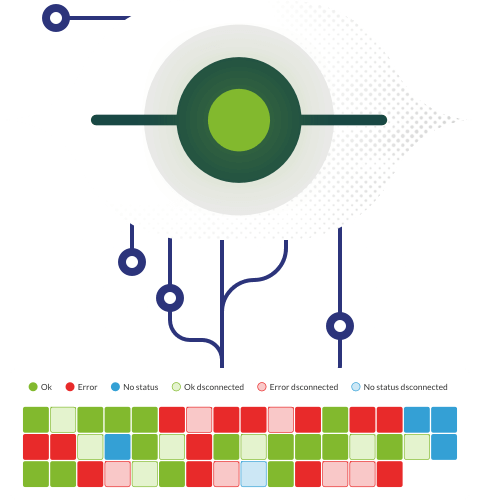There is quite a wide range of solutions offered by monitoring as a service to any company, from performing any analysis to detect the root cause of the issue to determining the path of the failure.
Here goes…
Our opinion on monitoring as a service
One of the most important and obvious benefits it brings to the table is that it solves training problems of workers involved or just solves the shortage of talent of these workers right away.
It may sound a bit harsh… but it is what it is.
The increase in the amount of information available in companies, and the obligation to be able to manage this IT structure well means that workers must constantly be better qualified.
In addition, the increasing importance of IT means that infrastructure managers have a certain amount of work overload.
Something that with a monitoring system does not happen!
Rather the other way around, monitoring as a service establishes a theoretical bridge between technology and business, drawing a scheme where you can easily detect where the source of the problem is, saving time and actions to the operating team.
Monitoring reduces the importance of the traditional involvement of people from different areas of the organization and the work overload that managers in this process may have.
To sum up, monitoring systems control all data and allow access to information from the same platform, avoiding that those in charge of this area have to stay aware of several fronts without fully concentrating on a single one.
Also inactivity cost is reduced!
Let’s get to the point!
“You must take into account that the transformation of a given company implies that there is more software.
And, therefore, more business areas that depend on technology. A series of changes that imply the need to hire more competent profiles.
Everything with the aim for all pieces to fit perfectly, both the computer and its software as well as the network and the technician who handles it “.
Explains Sancho Lerena, CEO of Pandora FMS, as you surelyl know, an international reference in monitoring.
An example of this need is that the growth of hybrid infrastructures is 25% per year according to IDC data.
For that reason, many companies are taking their chances on taking out their IT monitoring infrastructure to save money and especially time.
This process of getting the entire IT organization under the umbrella of the same system also helps the infrastructure manager, as they have higher capacity to manage its records.
On the one hand, it collects all the data despite the fact that it is a large volume.
And, secondly, it concentrates access to all that information on a single centralized console.
In conclusion, we get over the lack of time for the worker to be aware of fundamental tasks such as security or data management.
It also gets rid of the possible lack of capacity to adapt to the different operating systems that may exist in the same company.
And, lastly, the workload involved in facing a constant data flow where any minimal error must be detected is minimized.
Systems such as Splunk, Datadog or Pandora FMS itself help in the process.
Conclusions
Through monitoring, it is possible to use information in a reactive way, anticipating problems and alerts received; preventive, since analyses are obtained that help to be prepared for any worst-case scenario; and retrospective, since the emerged crises are also studied to find out the extent of their impact and know how to take measures properly in the future.
Pandora FMS’s editorial team is made up of a group of writers and IT professionals with one thing in common: their passion for computer system monitoring. Pandora FMS’s editorial team is made up of a group of writers and IT professionals with one thing in common: their passion for computer system monitoring.


















